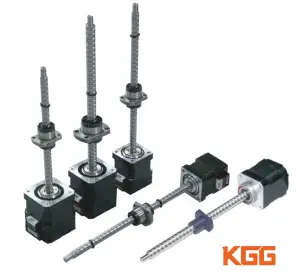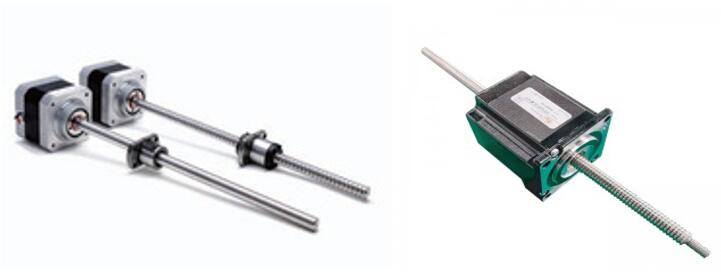 The Basic Principle of A Ball Screw Stepper Motor
The Basic Principle of A Ball Screw Stepper Motor
A Ball Screw stepper motor uses a screw and a nut to engage, and some method is adopted to prevent the screw and nut from rotating relative to each other so that the screw moves axially. Generally speaking, there are two ways to achieve this transformation: one is to build a rotor with internal threads into the motor and use the internal threads of the rotor to engage the screw to achieve linear motion, and the second is to use the screw as the motor’s output shaft and use an external drive nut outside the motor to engage the screw to achieve linear motion. The purpose of this is to simplify the design and enable the use of linear stepper motors for precise linear motion in many applications without the installation of an external mechanical linkage.
How A Ball Screw Stepper Motor Works
The rotor of the Ball Screw stepper motor is a permanent magnet. When the current flows through the stator winding, the stator winding generates a vector magnetic field. The magnetic field will drive the rotor to rotate at an angle, so that the direction of a pair of magnetic fields of the rotor is consistent with the direction of the magnetic field of the stator. When the stator’s vector magnetic field rotates an angle. The rotor also turns an angle with this magnetic field. Each time an electric pulse is input, the motor rotates an angle and advances one step. The angular displacement output by the Ball Screw stepper motor is proportional to the number of input pulses, and the rotational speed is proportional to the pulse frequency. Change the order in which the windings are energized, and the motor will reverse. Therefore, the rotation of the stepper motor can be controlled by controlling the number of pulses, frequency and the energization sequence of each phase winding of the motor.
 KGG Ball Screw Stepping Motor & Through Shaft Screw Stepper Motor
KGG Ball Screw Stepping Motor & Through Shaft Screw Stepper Motor
The Characteristics of Ball Screw Stepping Motor
1. When the Ball Screw stepper motor is working, each phase winding is not constantly energized, but energized in turn according to a certain rule.
2. The angle at which the rotor rotates every time a pulse electric signal is input is called the step angle.
3. The Ball Screw stepping motor can control the angle according to specific instructions, and can also control the speed. In angle control, every time a pulse is input, the stator winding is switched once, and the output shaft rotates through an angle. The number of steps is consistent with the number of pulses, and the angular displacement of the output shaft is proportional to the input pulse. During speed control, continuous pulses are fed into the windings of the stepping motor, and the windings of each phase are continuously energized in turn, and the stepping motor rotates continuously, and its speed is proportional to the pulse frequency. Changing the power-on sequence, that is, changing the rotation direction of the stator magnetic field, can control the forward or reverse rotation of the motor.
4. The Ball Screw stepper motor has self-locking ability. When the input of the control pulse is stopped, and the winding controlled by the next pulse continues to be energized, the motor can be kept at a fixed position, that is, it stops at the end position of the angular displacement controlled by the previous pulse. In this way, the stepping motor can realize rotor positioning when parking.
Linear Ball Screw stepper motors are widely used in many areas of high precision requirements including manufacturing, precision calibration, precision fluid measurement, and precision position movement.
For more detailed product information, please email us at amanda@KGG-robot.com or call us: +86 152 2157 8410.
Post time: Feb-08-2023






